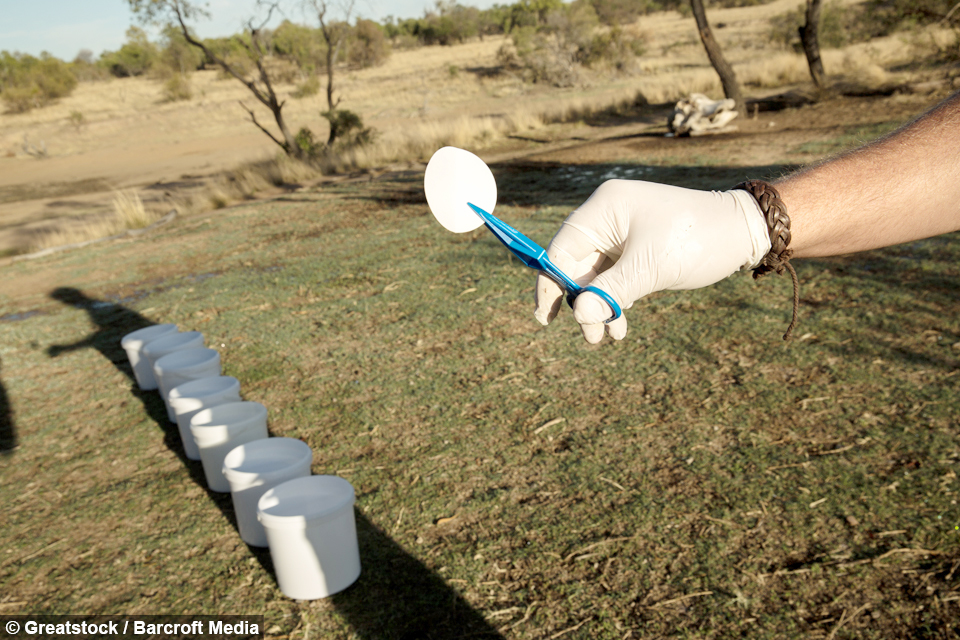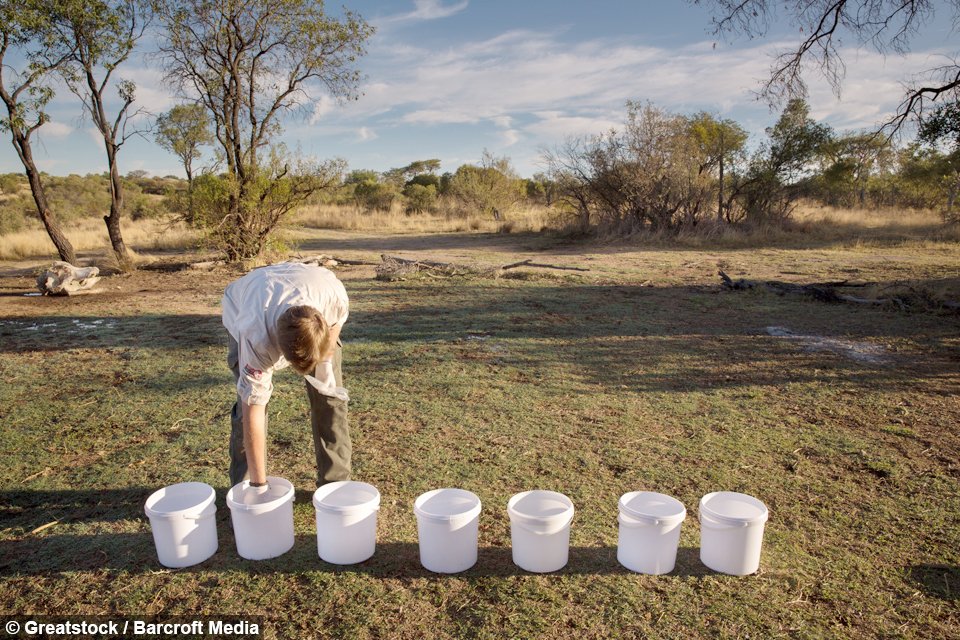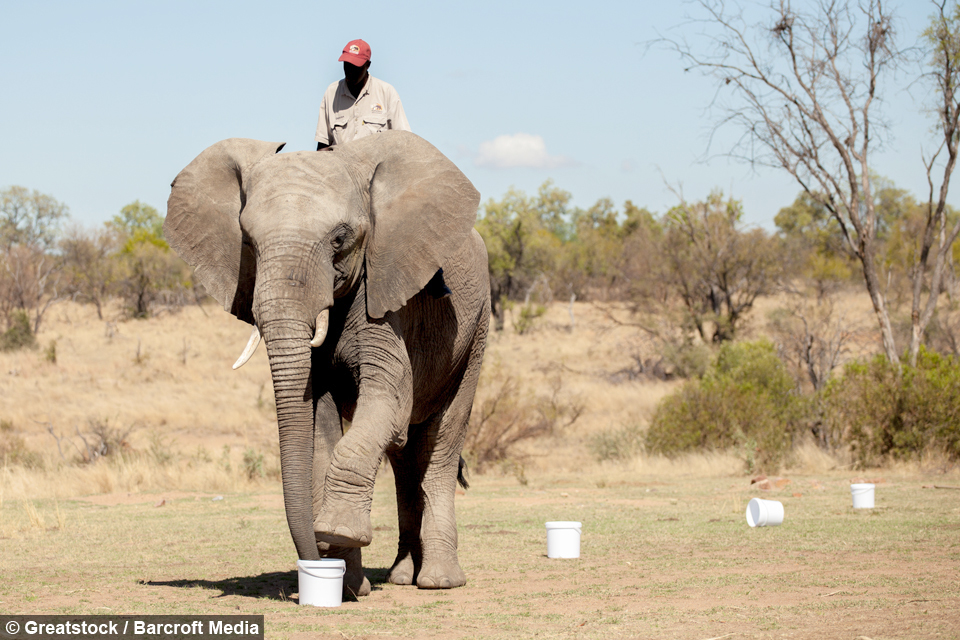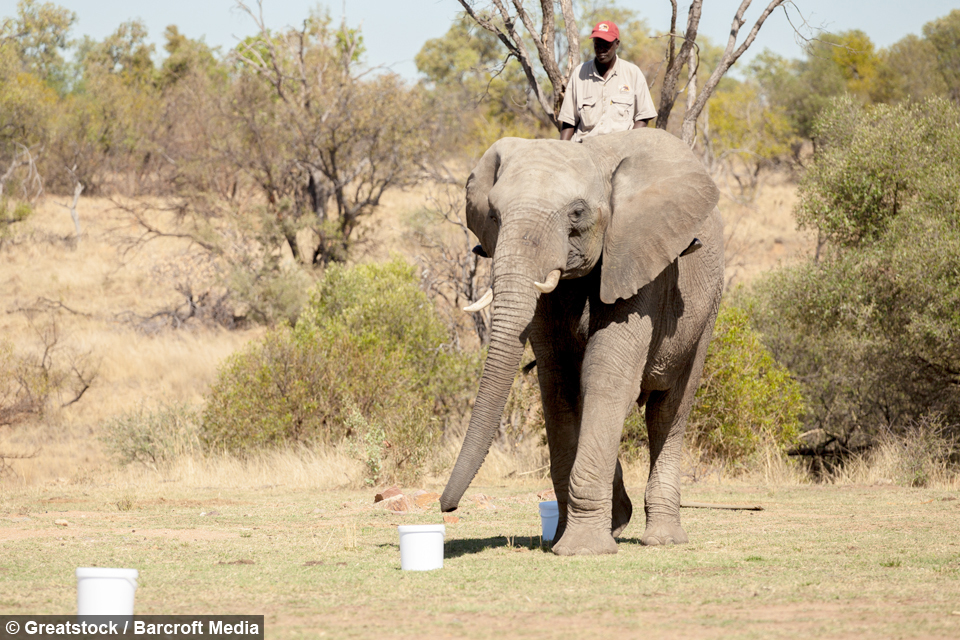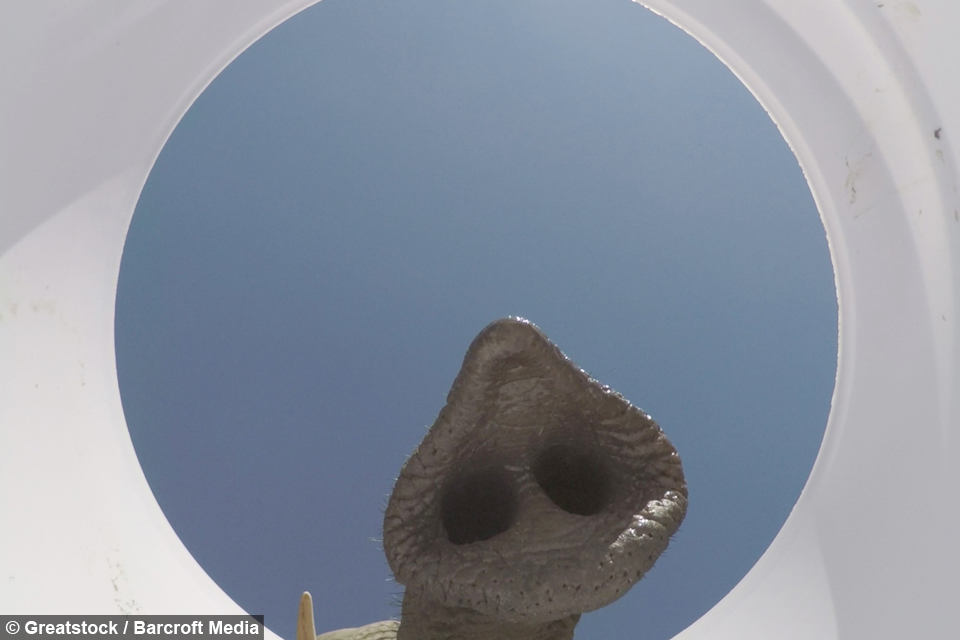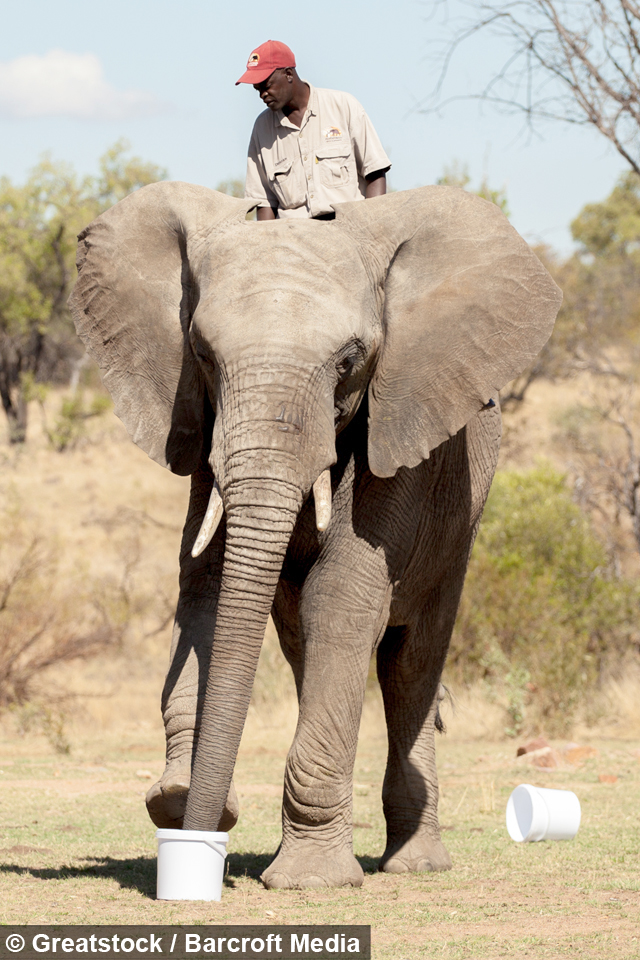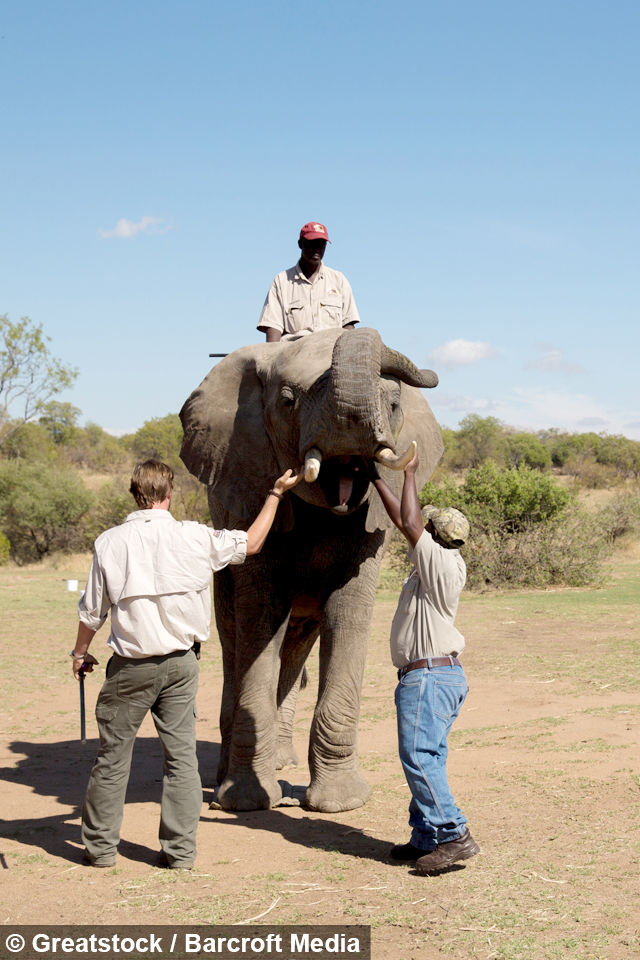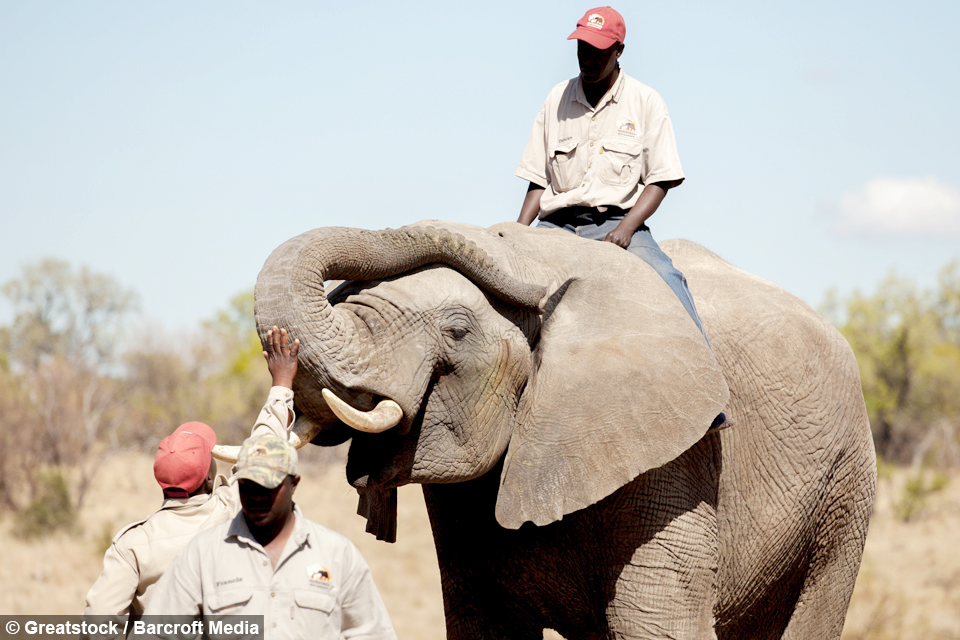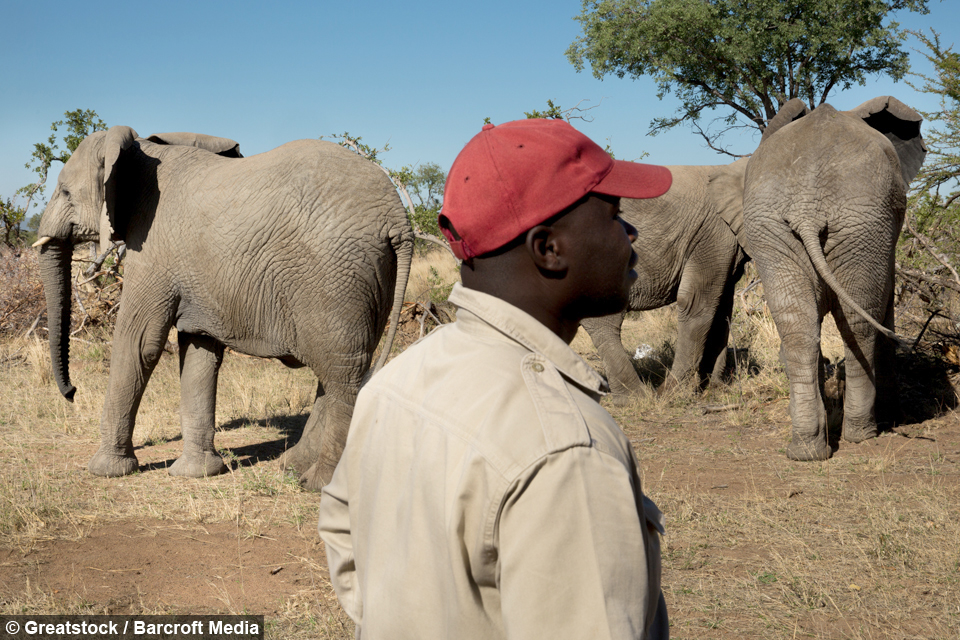Detector Elephants: Gentle Giants Sniff Out Explosives
By Mark Hodge @mrhodgey
Scroll down for the full story
Producer: Mark Hodge, Nick Johnson
Editor: Sonia Estal
Shot in November, this fascinating footage shows Chishuru, a 17-year-old male bull, carefully checking a row of white plastic buckets – one of which contains the explosive material.
The huge animal raises its right leg to signal that he has found the tiny amount of TNT which is placed on a piece of filter paper.
This amazing research is being carried out in Bela Bela in the Limpopo Province of South Africa by wildlife organisation Adventures with Elephants.
In 2007, researchers discovered that a herd in Angola, who were being tracked using GPS technology, were purposely avoiding landmine fields left over from the civil war – which had claimed the lives of many elephants.
And when Chishuru was tasked with finding the TNT for the first time in over a year, he did so quickly without any refresher training.
Michael Hensman, manager of Adventures with Elephants, spoke about utilising the animals' outstanding memories and their powerful trunks.
He said: “We set out to try and figure out how they were able to avoid those areas and it seems to be related to olfaction.
“We are never going to put elephants in to a dangerous situation like minefields where they could get hurt.
“The idea is to remotely collect samples and bring those samples out to the elephants for landmine area reduction.”
This research has been largely funded by the US Army Research Office who are currently working on developing scent detection devices.
Researchers are also looking at other applications for the elephants, including cancer and diabetes screenings.
Zoology student Ashadee Kay Miller explained why elephants have such a finely attuned sense of smell.
She said: “Elephants have a much better sense of smell than dogs do.
“We can say this primarily because they have more than double the amount of olfactory receptor genes in their DNA.
“Not only do elephants have a better sense of smell, but there is a lot less effort required in maintaining them as a biosensor [compared to a dog].”
